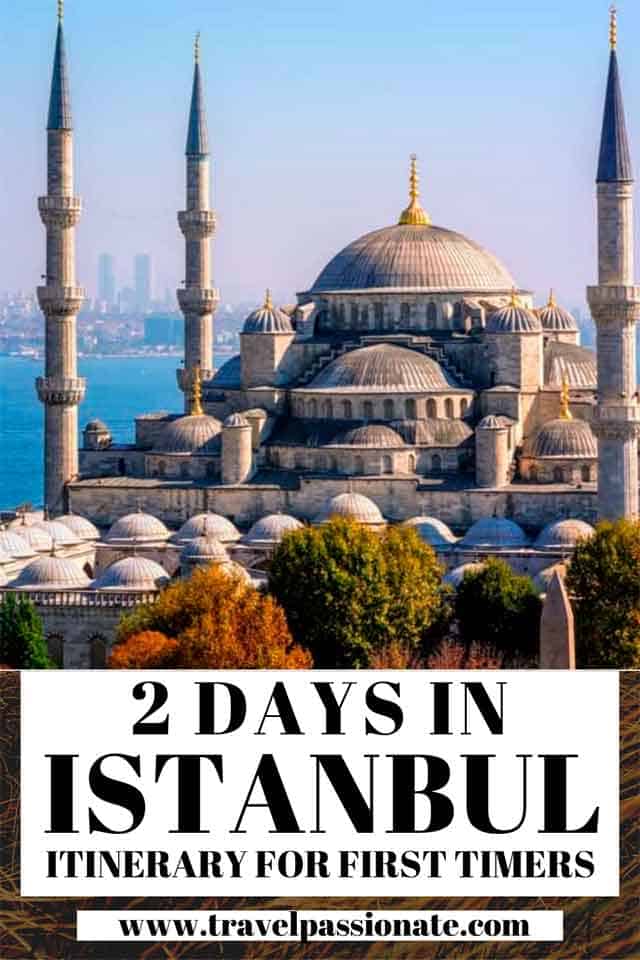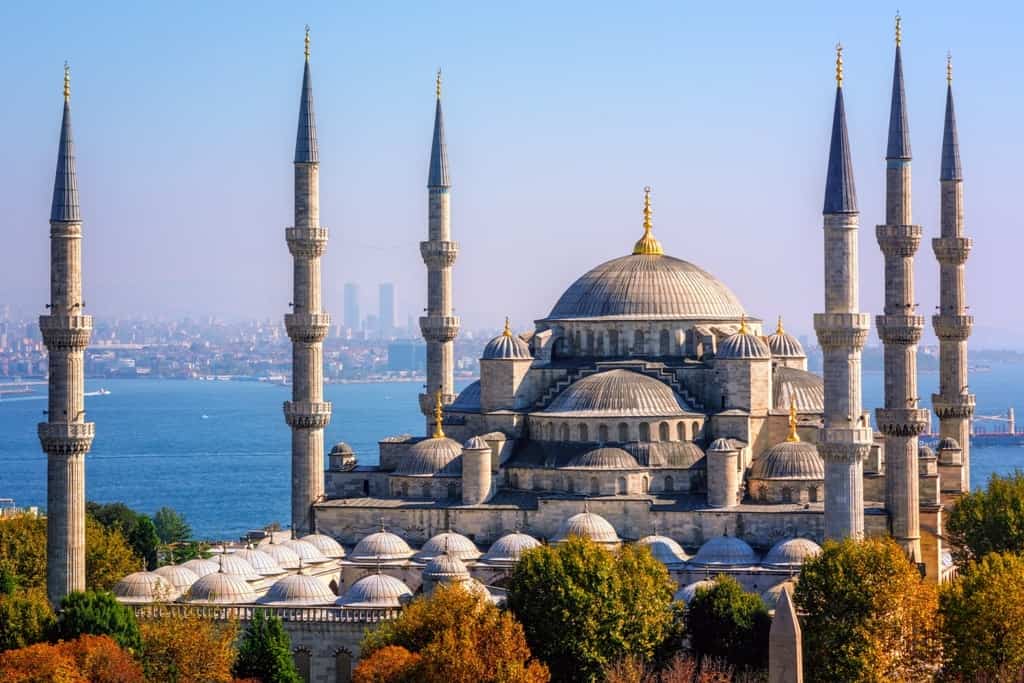The vast city of Istanbul, in antiquity known as Constantinople, straddles the banks of the Bosporus, between two continents and, really, between two worlds. Founded by Thracian tribes in the 12th century BCE, and later colonised by the Greeks, Constantinople thrived as the capital of the Byzantine Holy Roman Empire from 196 to 1453, when it was conquered by the Muslims and became the ruling city of the powerful Ottoman Empire.
It was the crossroads of the Silk Road and grew rich through trade with China, Venice, and Africa. Under the Ottoman Empire, the city enjoyed a powerful renaissance, especially in artistic and architectural achievements. It was an important diplomatic centre in the 19th century, but when the capital of Turkey was moved to Ankara, the city began to decline and there were mass exoduses of the population. The name Istanbul is the native Turkish name and has only been the official name of the city since 1930.
Istanbul deserves as much time as you can give it – a minimum of two days is enough to experience the city’s history and growth. My two-day itinerary of Istanbul introduces you to the ancient and modern history and the intricacies of the Istanbul culture.

Disclaimer: This post contains affiliate links. This means that should you click on certain links, and then subsequently purchase a product, I will receive a small commission.
Table of Contents
A 2 day Istanbul itinerary: Things not to miss
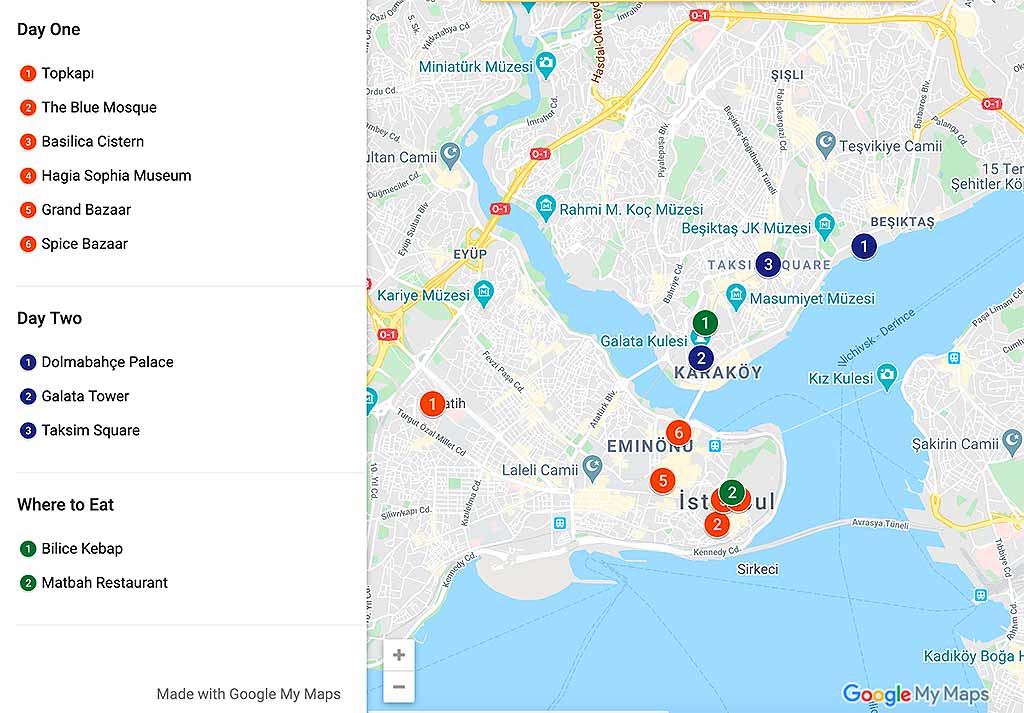
2 days in Istanbul: Day One
To gain a better understanding of Turkish history, begin with the Byzantine era, although there are earlier structures. Topkapi Palace is the medieval palace complex at the tip of the old peninsula, while its neighbors Hagia Sophia and Sultanahmet Mosque highlight early Byzantium and the pinnacle of Ottoman power.
You might also want to read this post if you are coming to Istanbul in winter.
1. Topkapi Palace
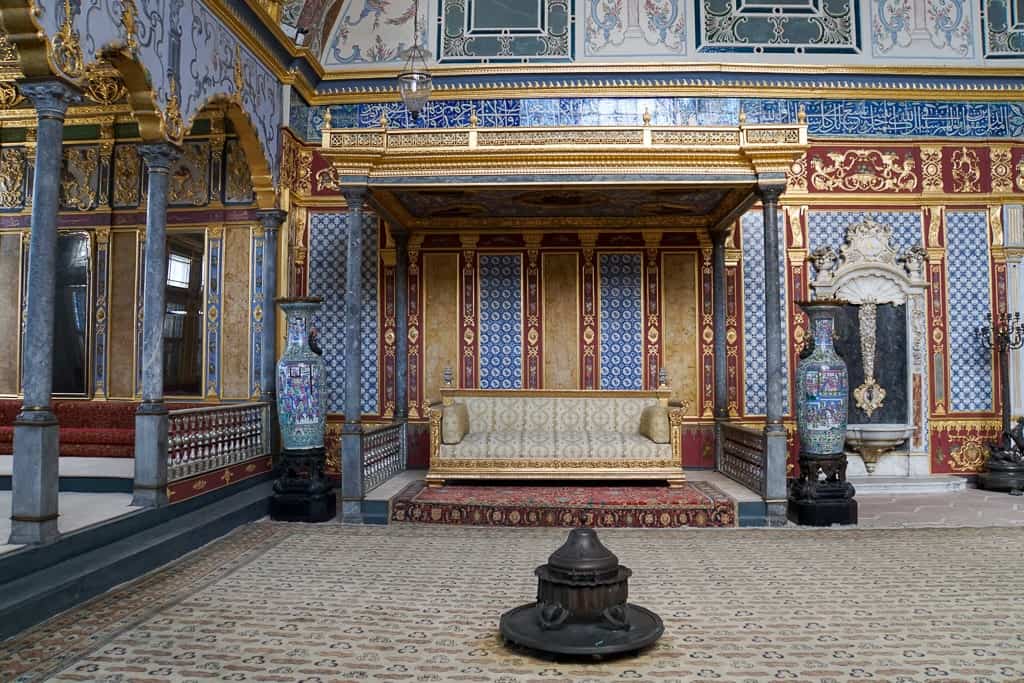
In the 15th century, six years after the Muslim conquest, Mehmed the Conquerer order the construction of a new palace on the peninsula of the old city. Topkapi, meaning Cannon Gate, was also known as the New Palace to distinguish it from the Old Palace in Beyazit Square.
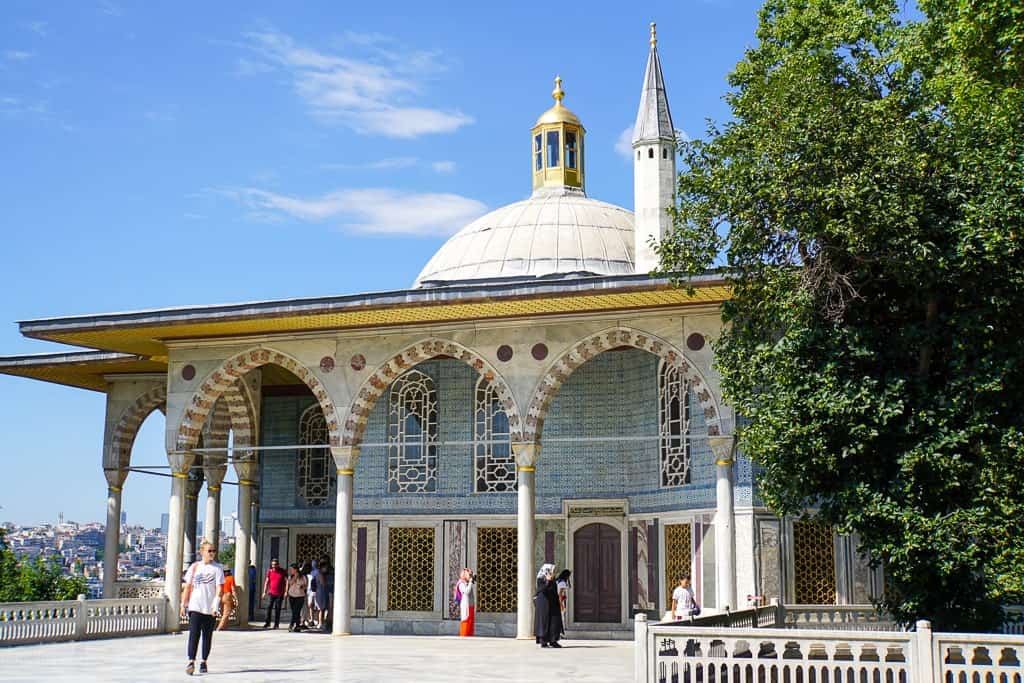
The medieval palace consists of four main courtyards, Imperial Harem, Imperial Treasury, Mosque of the Agas, Turkish baths, and more. In 1856, the sultan moved his court to Dolmabahce Palace, but Topkapi was retained from government functions. In 1923, the palace was transformed into a museum and retains no official functions. Since 1985, the palace has been a UNESCO World Heritage Site.
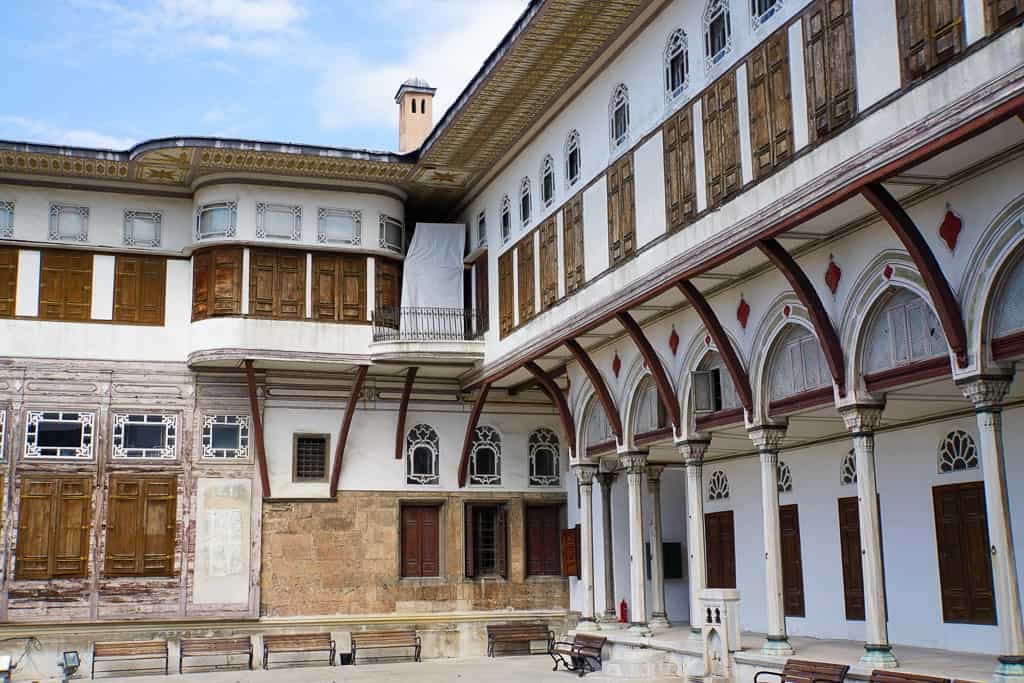
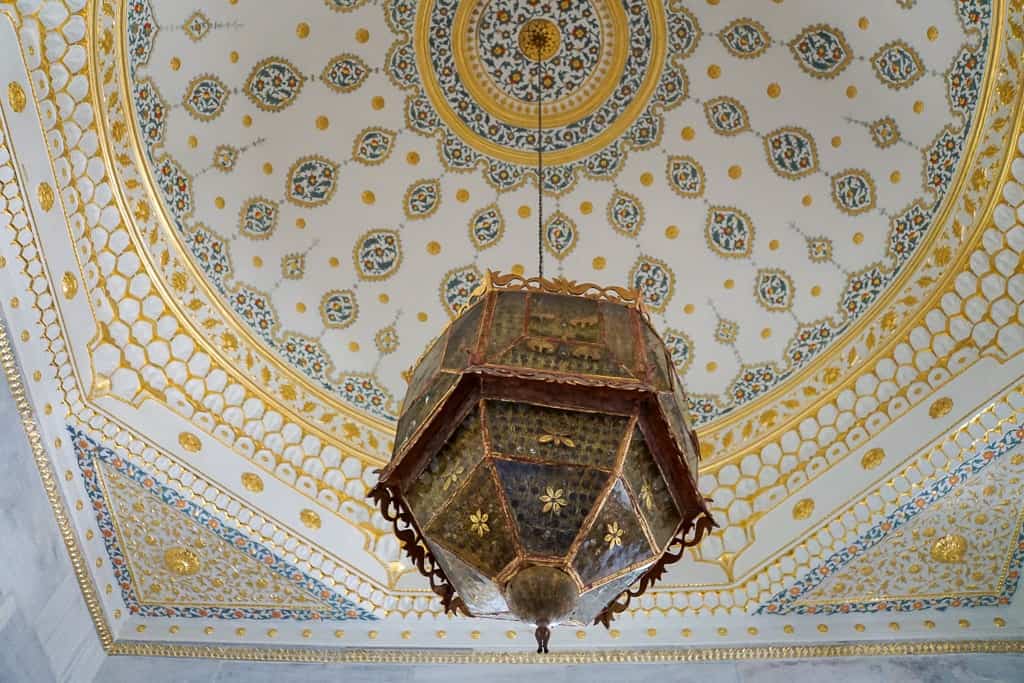
Tip: The Top Kapi Palace is huge and you should definitely visit the Harem which for me was the highlight. Again the lines are huge so I suggest this 3 hours guided tour that includes skip the line tickets.
2. Blue Mosque
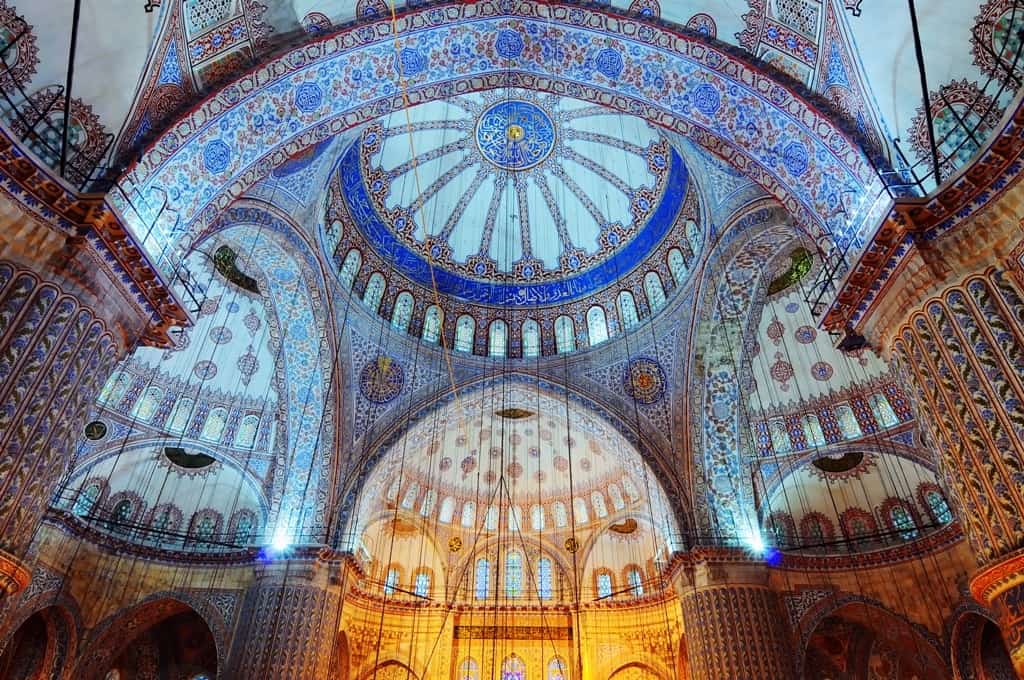
The Blue Mosque, officially Sultanahmet Mosque, is a functioning mosque and tourist attraction near to Topkapi Palace and next door to Hagia Sophia. It is called the Blue Mosque because of the hand-painted blue tiles that adorn the interior walls. Built in the mid-17th century, Sultanahmet was the first imperial mosque built in more than 40 years.
The Blue Mosque still dominates the Istanbul skyline, with five main domes, eight secondary domes, and six minarets. Its design is the pinnacle of Ottoman mosque architecture, incorporating Byzantine elements from Hagia Sophia alongside traditional Islamic architecture, and is considered the last great mosque of the Classical Period in Ottoman architecture.
When you visit, be sure to wear appropriate clothing, as it is a mosque where people still come to pray, and respect the culture.
3. Basilica Cistern
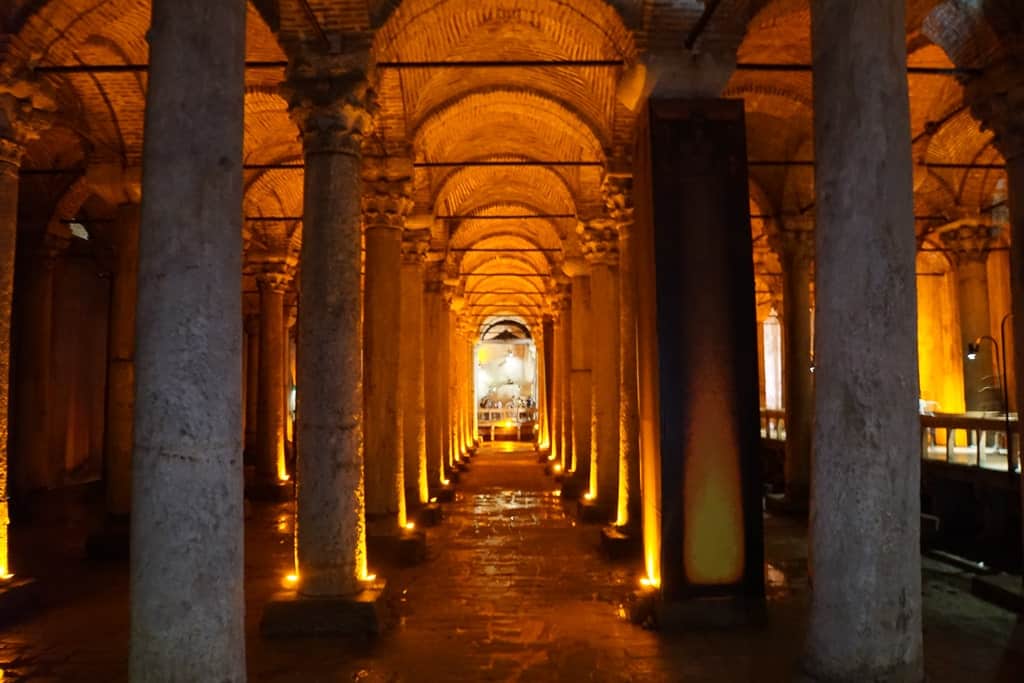
The Basilica Cistern is one of the huge ancient cisterns that lie under the city of Istanbul. It is located near Hagia Sophia and the Blue Mosque on the historical peninsula. The name Basilica comes from where it was built, under the great basilica and public square. The cistern was constructed in the 6th century and provided a water filtration system for the First Hill and Topkapi Palace well into modern times.
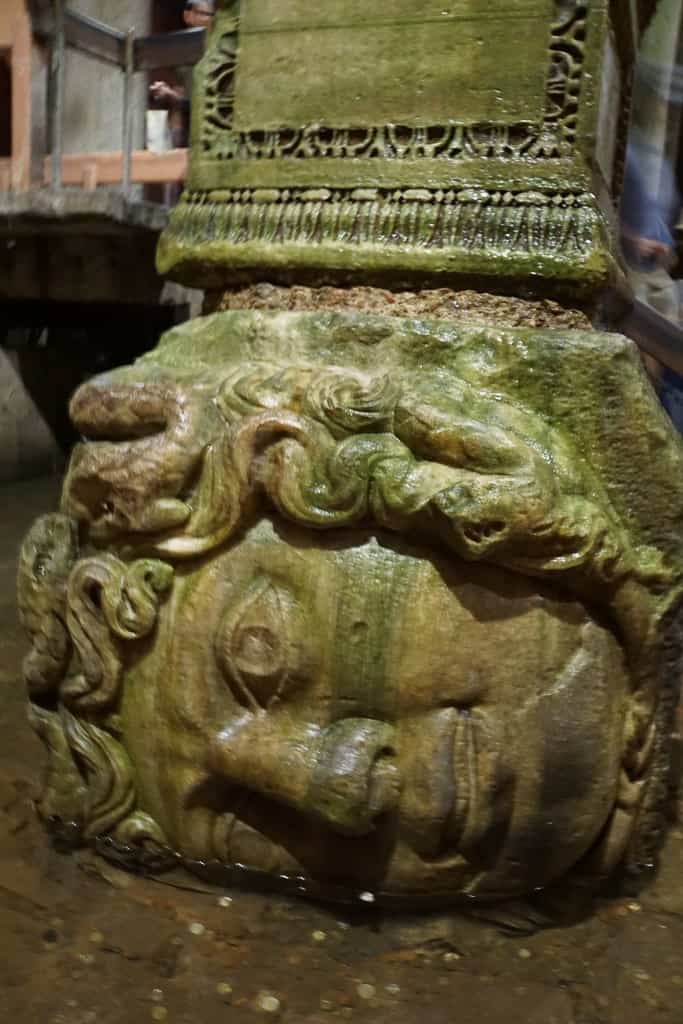
Today, the water level is purposefully kept low for visitors. Of the 336 marble columns that support the space, some of the most interesting include the Hens Eye column and the two Medusa columns. Many of the columns are made with repurposed columns from older buildings across the Roman Empire.
4. Hagia Sophia
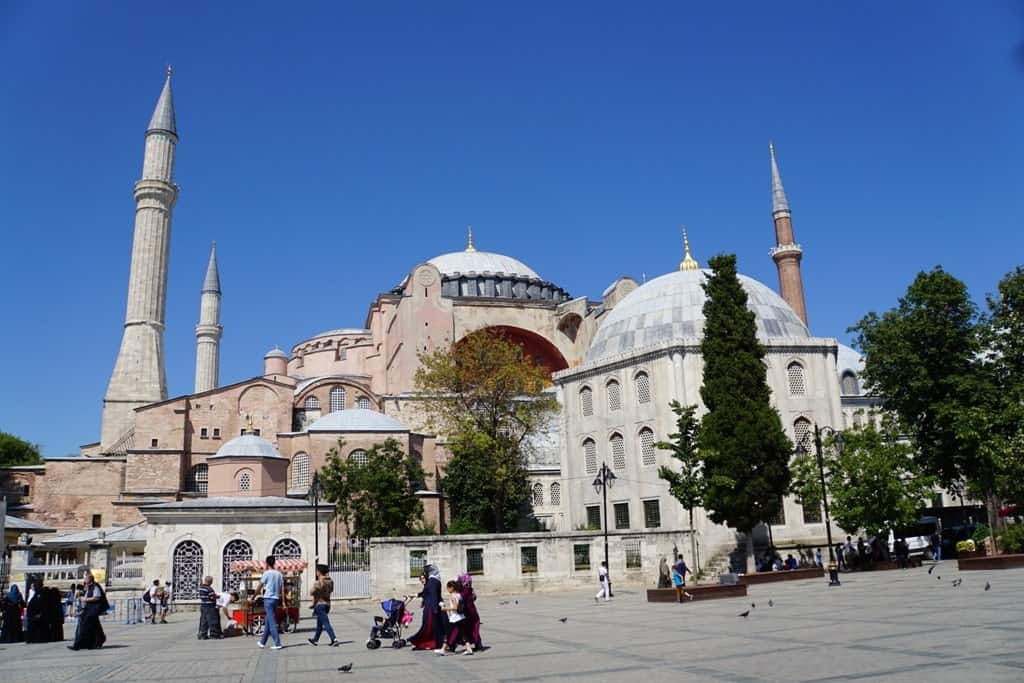
Hagia Sophia is a museum located near the Blue Mosque and Topkapi Palace. When it was built in 537, it was an Orthodox cathedral and was the world’s largest building, famous for its massive dome. In 1453, when the Muslims conquered Constantinople, it was converted into an Ottoman mosque.
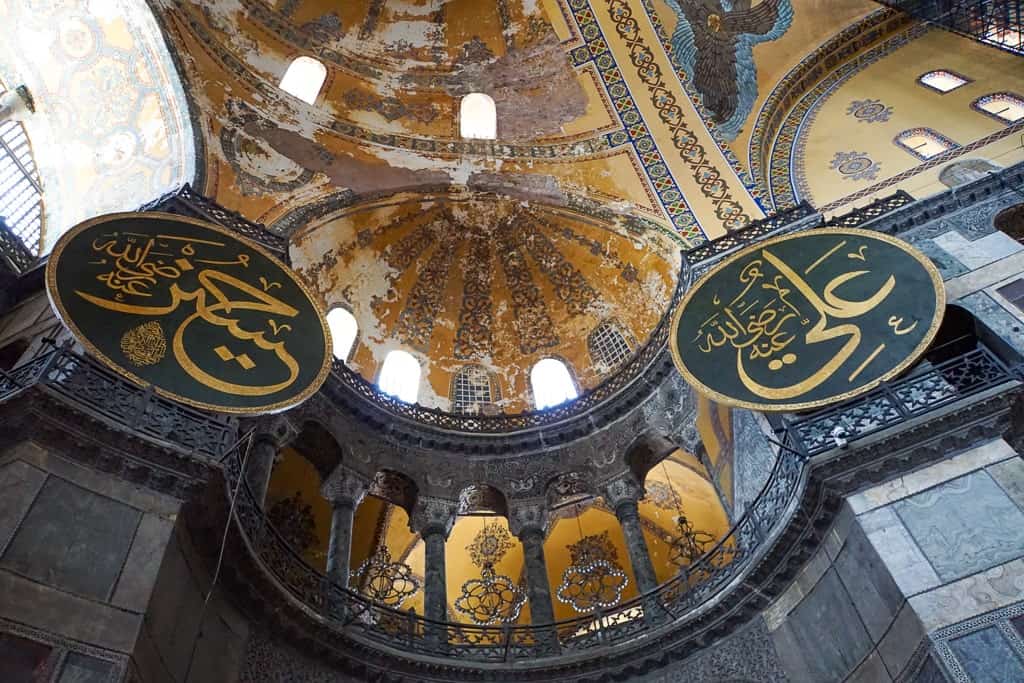
Until the construction of the Blue Mosque, Hagia Sophia was the principal mosque in the city, and its Byzantine architecture inspired the design of many of the other famous Ottoman mosques, including Sehzade, Suleymaniye, and Rustem Pasha.
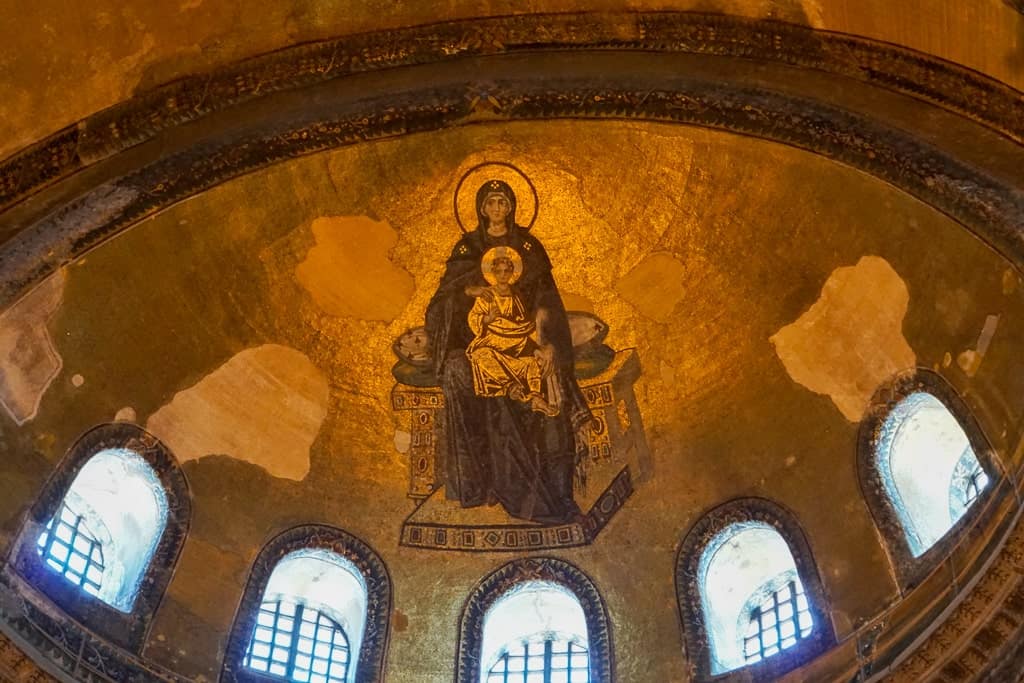
Hagia Sophia was secularized in 1931 and reopened as a museum in 1935. It is one of the most-visited tourist attractions in Istanbul.
Tip: Lines are big to enter Aghia Sophia so I suggest that you purchase a skip the line ticket with a guided tour.
5. Grand Bazaar
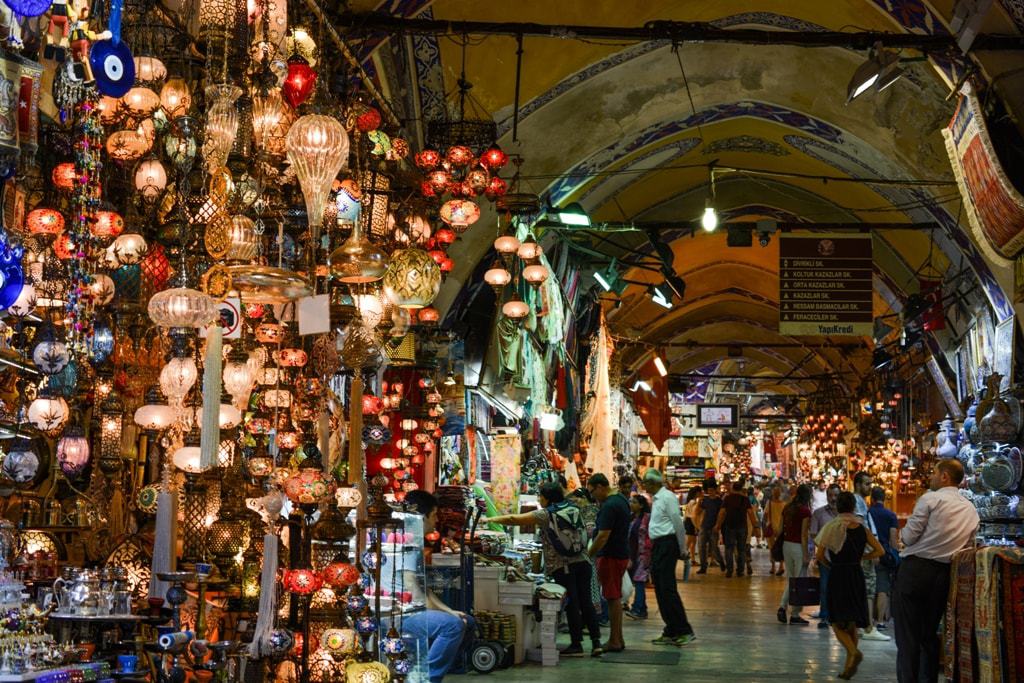
Often considered one of the world’s first shopping malls, the Grand Bazaar in Istanbul covers an area of 30,700 square metres, 61 covered streets, and over 4,000 shops. It’s located within the old walled city in Fatih and was built in the 1450s, just after the Ottoman conquest, but took over 100 years of construction and other growth before achieving its final shape.
Until the first part of the 1800s, the Grand Bazaar was the largest and most abundant market in the world. Until the early 20th century, the shops were not traditional western shops as we know them: merchants sat outside their stalls and did not display wares.
Customers sat and drank tea before viewing items for purchase. Some of this still exists today, but more than likely you will see modern shops with items on display.
The Grand Bazaar can be accessed through 4 gates and closes each night.
6. Spice Bazaar
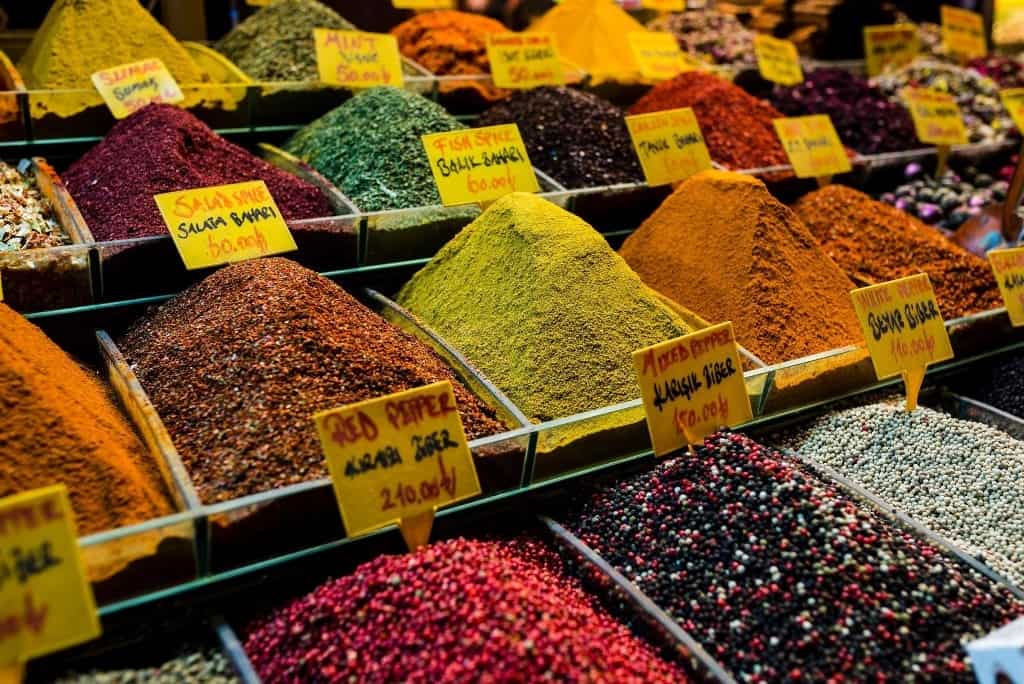
The Spice Bazaar, or Egyptian Bazaar, is where visitors to Istanbul can shop for herbs and spices to bring home, although these days you are likely to see other kinds of shops too. The bazaar was built in the 17th century and, next to the Grand Bazaar, is one of the most famous markets in Istanbul.
2 days in Istanbul: Day Two
On day two, explore the later era of Istanbul, from the lavish 19th century Dolmabahçe Palace to the modern Istiklal Caddesi.
Bosphorus Cruise
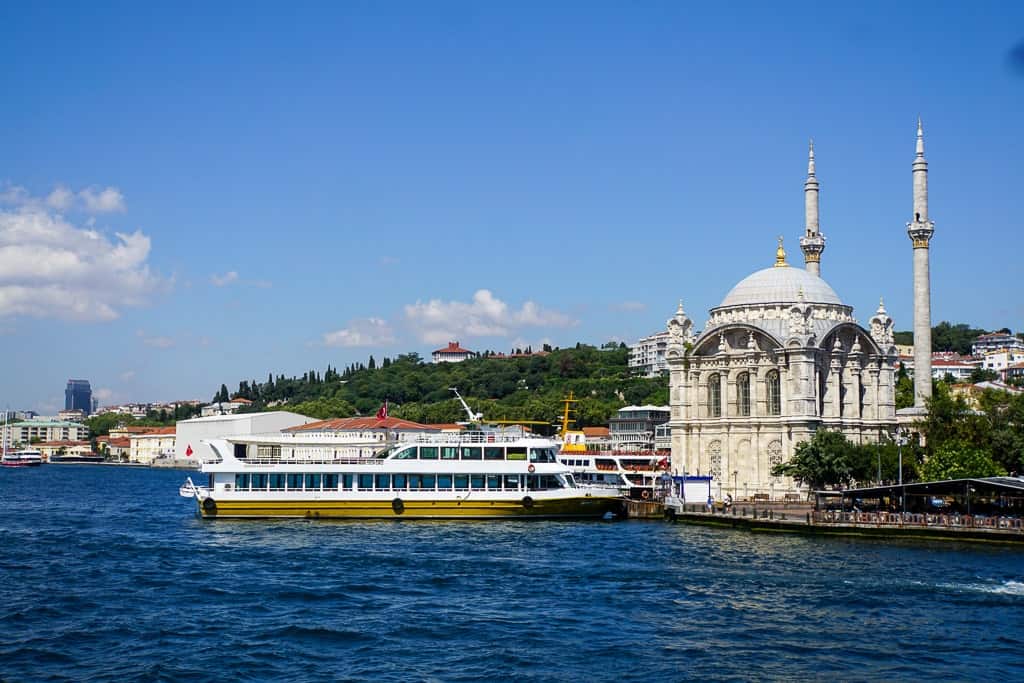
A Bosphorus cruise is one of the best ways to see the city’s outer limits. Many begin at the ferry terminal near Eminönü and the Galata Bridge although some also pick up in Ortakoy, which is under one of the bridges. All cruise north through the Bosphorus Strait, past Beşiktaş and Bebek, under the two modern bridges to Istinye, and back. These short cruises take around 2 hours. A longer cruise will go all the way to the Black Sea and take a full day or evening. You can check out the following:
Bosphorus Dinner Cruise with Entertainment
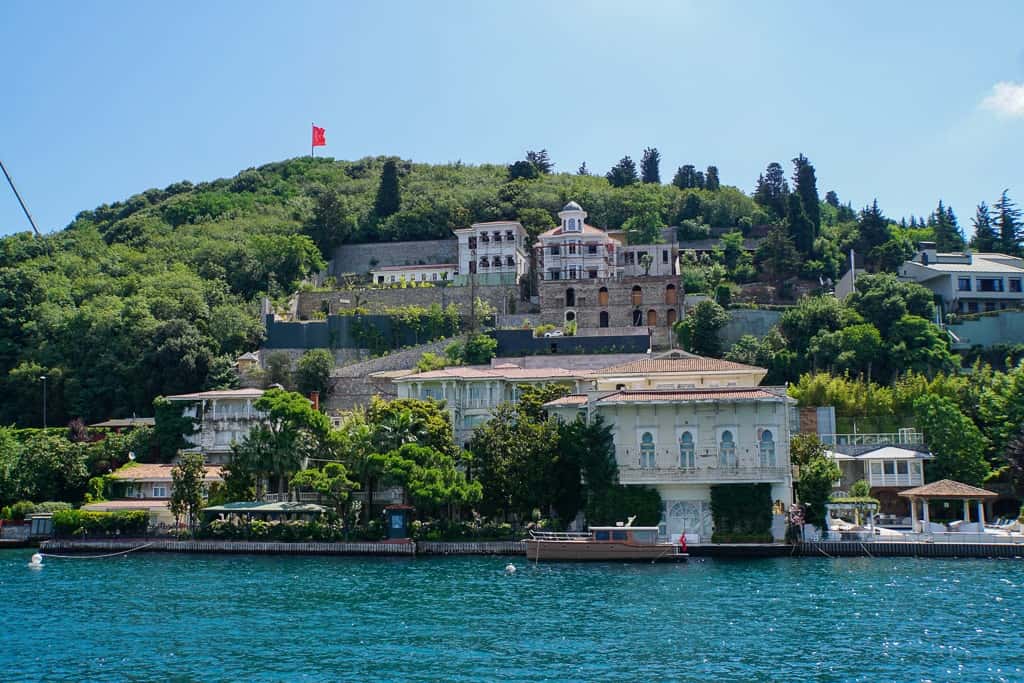
While the skyline of Istanbul is worth seeing from the water, there are other reasons to take a cruise. Some of the attractions along the Bosphorus include the many lavish palaces built in the 17th and 18th centuries. These Ottoman palaces were built by sultans and were often used as summer homes rather than year-round palaces. If you take a full day or evening cruise, you can stop in some of the smaller villages to explore a side of Turkey many visitors don’t see.
1. Dolmabahçe Palace
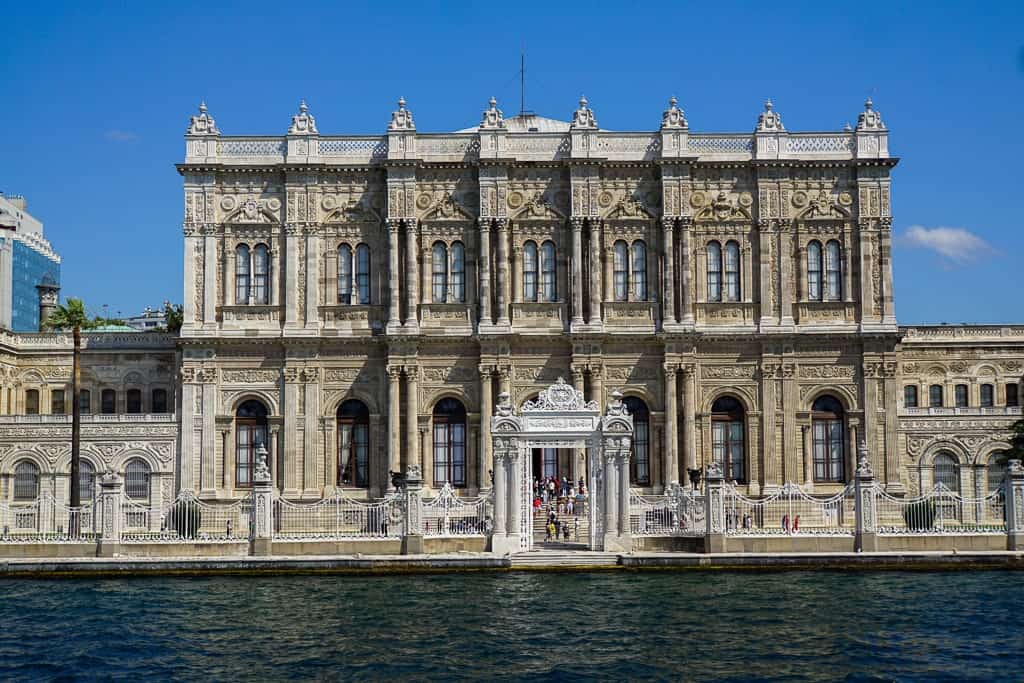
Dolmabahçe Palace is the most famous of Bosphorus palaces, as it is where Sultan Abdulmecid I decided to relocate the official residence to when Topkapi Palace proved to be less than contemporary. The palace was built on the shores of the Bosphorus at Beşiktaş in the mid-1800s. Following the abolition of the caliphate in 1924, the palace was transferred to the Turkish Republic and was a presidential palace for Ataturk until his death.
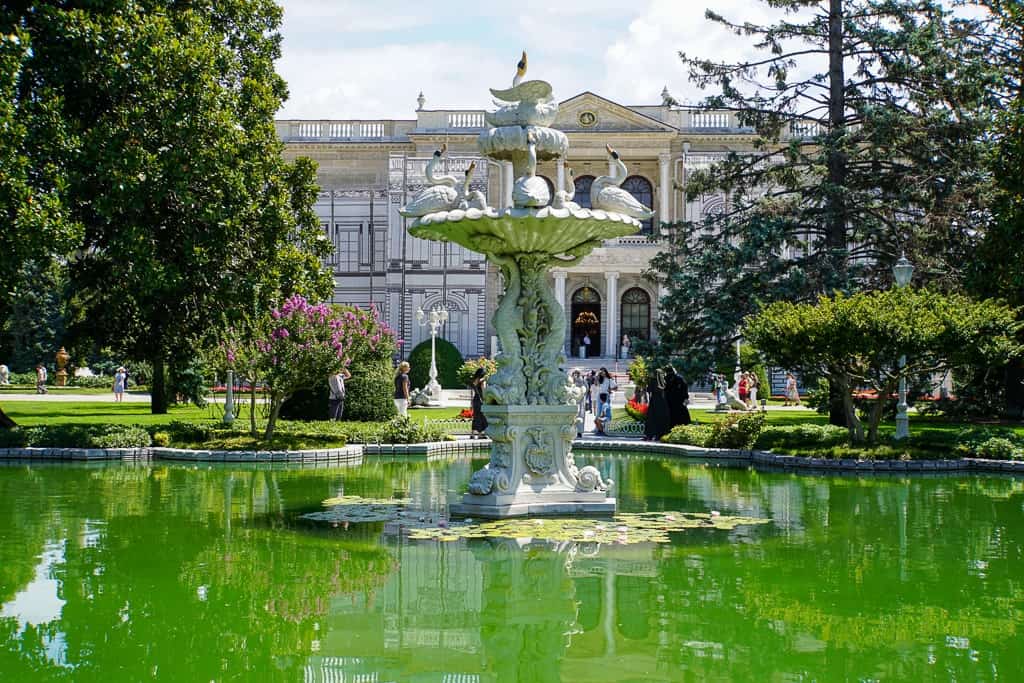
The palace is the largest palace in Turkey and has 285 rooms, 46 halls, 6 baths, and only 68 toilets. It blends the traditional Ottoman architecture with Baroque, Rococo, and Neoclassical styles, reflecting the influence of European style on Eastern cultures. The world’s largest chandelier hangs in the Ceremonial Hall; originally thought to be a gift from Queen Victoria, it turns out that the sultan actually paid in full for it.
The mosque located in the complex was commissioned by the sultan’s mother; however, she died before it was completed.
2. Galata Tower
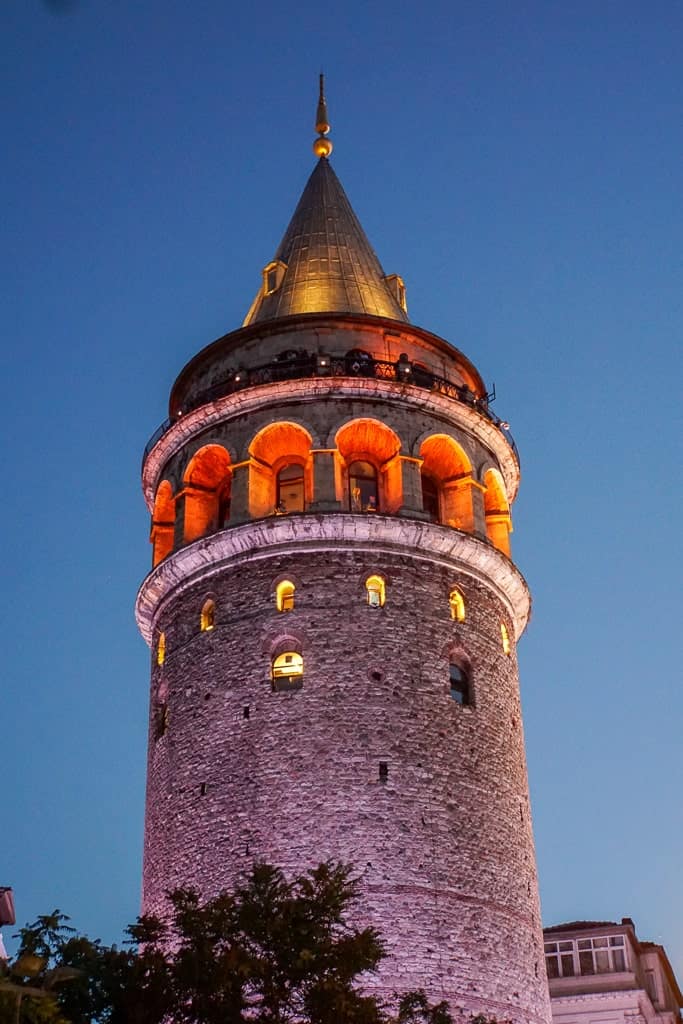
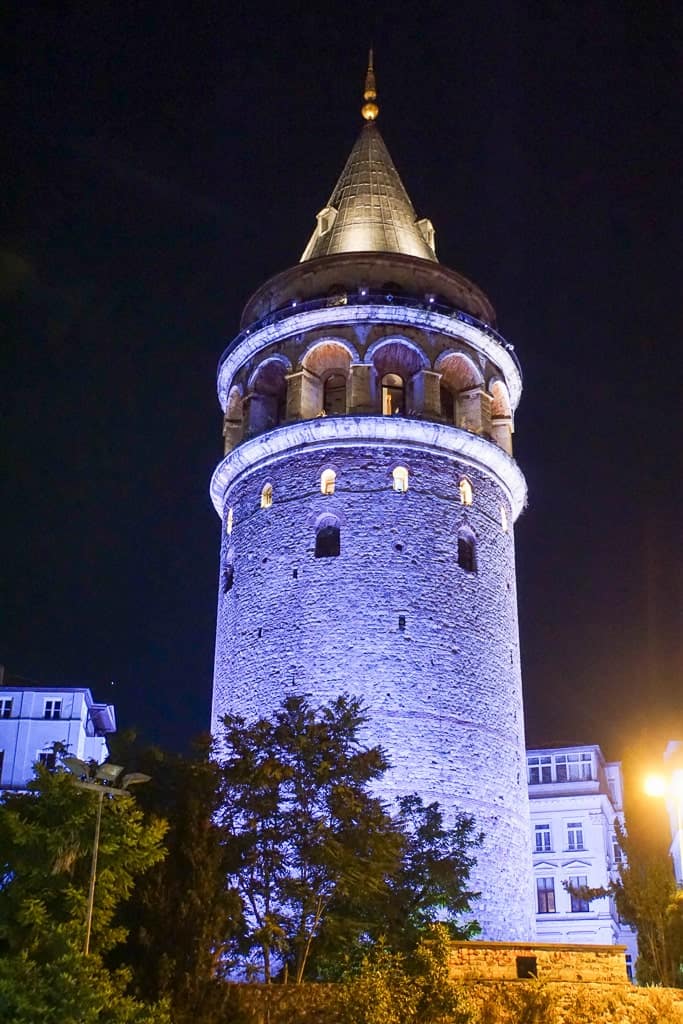
Located in Galata, across the Golden Horn from Eminönü and a short uphill walk from Dolmabahçe Palace, the Galata Tower is one of the skyline landmarks of the city. Built in the 14th century, the small stone tower was used mainly for observation. Today, there’s a bar and restaurant on the top floor and the surrounding area is a popular place for coffee or drinks.
3. Taksim Square
Taksim Square is located in Beyoglu, home to the Republic Monument that commemorates the 5th anniversary of the Turkish Republic. It’s also the heart of modern Istanbul with shops, restaurants, and bars that pulse with the beat of young, cosmopolitan Istanbul. Istiklal Caddesi (“street”) is the main drag, but there are many smaller streets and alleys worth exploring. Taksim is also home to the world’s second-oldest metro system (after London) and an antique trolley still runs the length of the street.
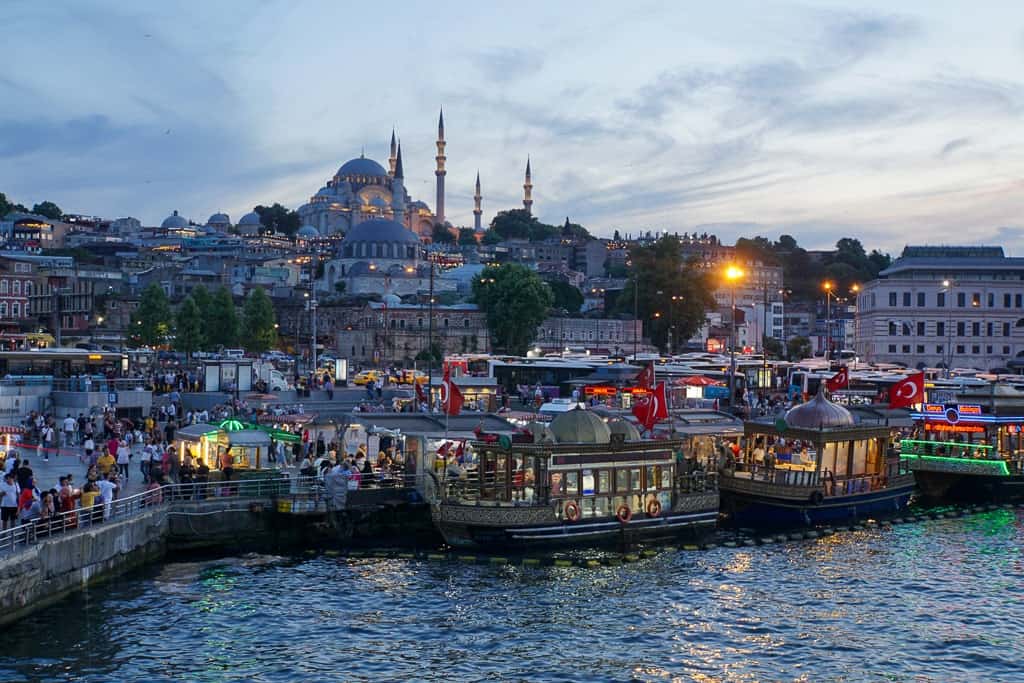
How to get from and to the airports of Istanbul
Istanbul New Airport (IST) replaces all flights arriving into Istanbul Atatürk Airport, the former main airport for flights arriving from Europe and beyond. As of April 2019, there are no longer passenger services arriving into Istanbul Atatürk Airport so travellers will need to arrive into IST and make plans to travel to and from the city accordingly.
Istanbul New Airport (IST) is located around 50km from Sultanahmet, the Old Town of Istanbul – the main tourist centre of the city.
There are various options for getting from the airport to Sultanahmet, with journey times varying between 30 to 90 minutes depending on which mode of transport you take and whereabouts in the city you are heading.
Taxi
Driving or taking a taxi will take approximately 60 minutes to reach the centre of Istanbul. A private taxi is likely to cost between €60-70 and can be booked online prior to arrival or at the airport.
Shuttle
Shuttle services are also available from Istanbul Airport into the city centre, with shared mini-van services costing approximately €20 per person, dropping you right at your hotel. These services will take multiple guests to different hotels and therefore journey times may vary depending on where your hotel is located in relation to others.
Bus
Another option for getting into Istanbul city centre from the airport is to take the bus. The New Airport Transit Bus runs around 150 times a day between the airport and city and bus tickets can be purchased from floor -2 of the airport. There are a range of bus tickets that can be purchased including the rechargeable Istanbulkart (6 TL), 5 Pass Card (BeşGeç, 17 TL) or 10 Pass Card (OnGeç, 32 TL).
Bus services IST-5 Istanbul Airport – Besiktas, IST-18 Istanbul Airport – Mecidiyeköy and IST-19 Istanbul Airport – Taksim run every 15 minutes from the airport to the city. Alternatively, you could take the H-2 Airport Express service that runs from the airport to the Şişli-Mecidiyeköy metro station. This journey takes around 35 minutes and costs just 5.20 TL using an Istanbul Card. From the Şişli-Mecidiyeköy metro station, you can change to the M2 metro line which allows you to reach Taksim and Sultanahmet in the city.
Where to Eat in Istanbul
1. Bilice Kebap
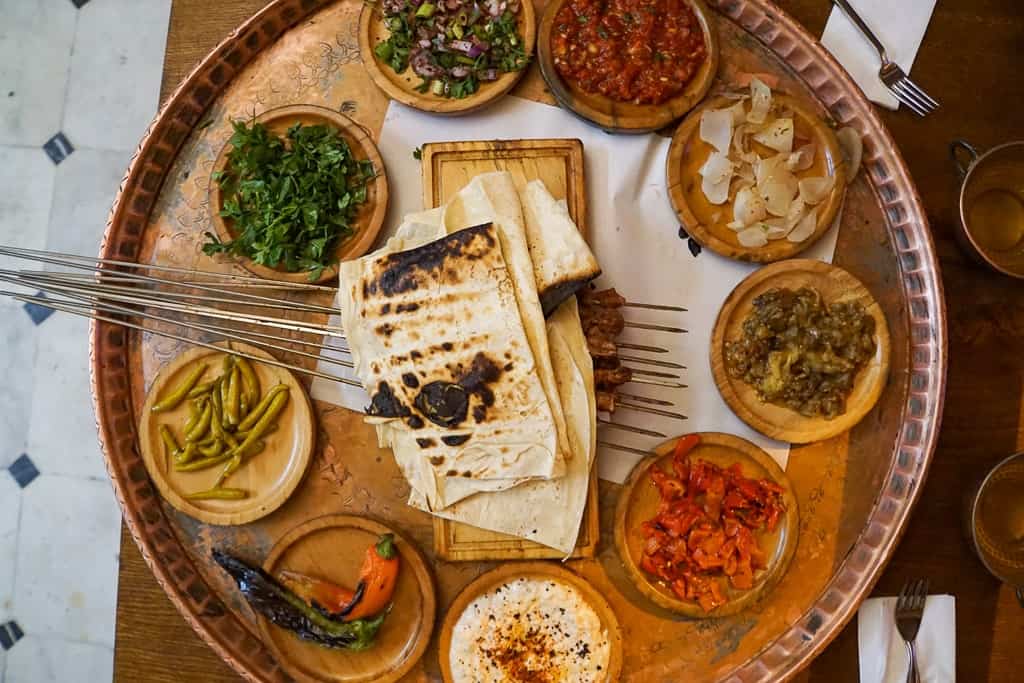
Bilice Kebap is an incredible place to enjoy Turkish kebabs and meze dishes, with chicken, lamb and aubergine skewers cooked to perfection and served alongside tasty dips, salads and freshly-baked bread. The restaurant offers a range of small dishes so that every member of the group can try different meals and ingredients and choose their favourites. Bilice Kebap has a traditional rustic style so you’ll know you are dining on dishes that the locals love to eat.
2. Matbah
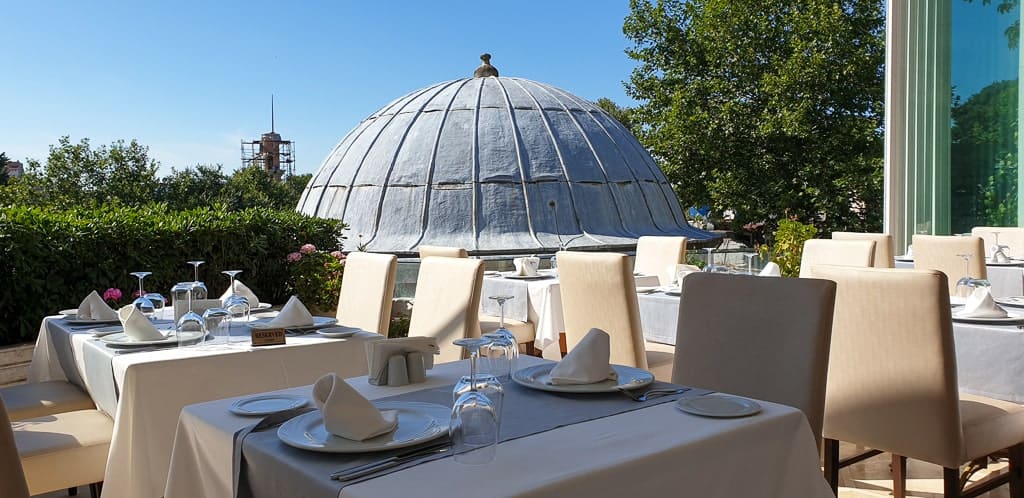
Matbah Restaurant in Istanbul offers Ottoman Palace cuisine in a luxurious locale so you’ll feel like royalty as you dine on decadent dishes all night long. The swanky restaurant features floor-to-ceiling windows around the room so that you can take in the breath-taking vistas of the city while you tuck into tasty Ottoman cuisine. This is an exclusive (if somewhat expensive for Istanbul standards) dining experience that it well worth it if you’re a foodie fanatic visiting Istanbul.
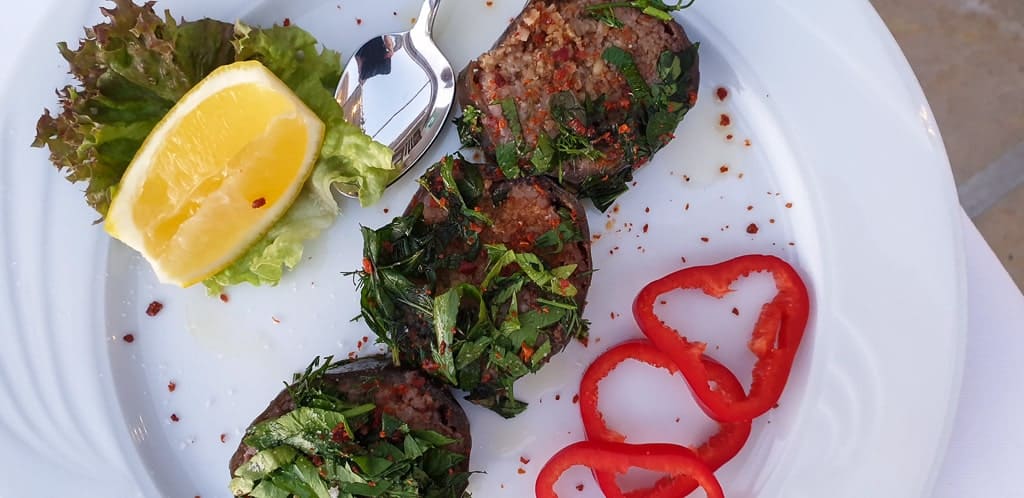
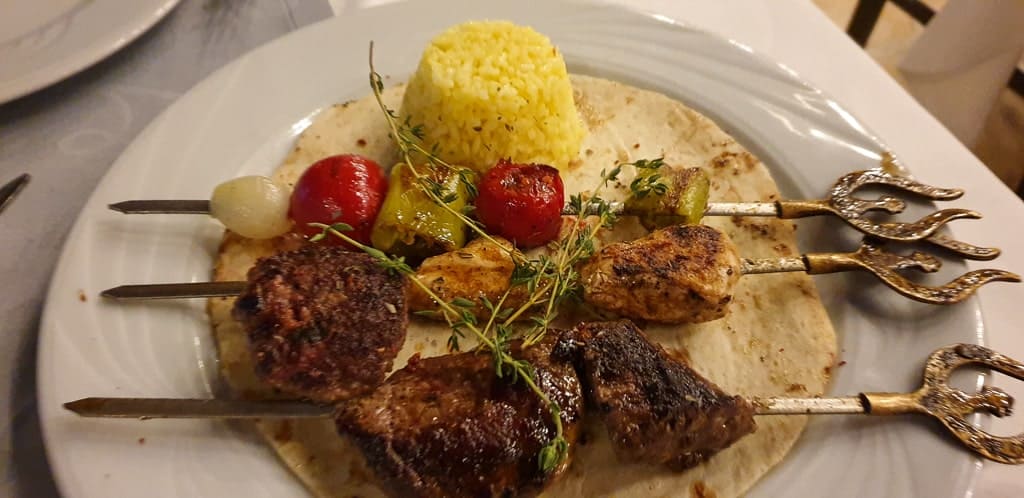
Where to Stay in Istanbul
It makes sense to stay on the European side of Istanbul if you are just staying a few days. You are closer to all the landmarks because the Asian side is largely residential and commercial. If you want a treat, take a look at these 5 hotels.
- Pera Palace Hotel dates back to the end of the 19th Century, welcoming guests arriving from the Orient Express and has recently been refurbished at a cost of $25 million. It hosted Agatha Christie at one time.
- Ciragan Palace Hotel is a former Ottoman Palace on the Bosphorus and includes a suite as expensive as anything in the world.
- The Four Seasons Sultanahmet is a former prison but now a quality hotel if you want to stay close to the district’s major landmarks.
- Ritz Carlton Istanbul in Besiktas is close to the Vodaphone Stadium and the Dolmabahce Palace.
- Rixos Pera Istanbul is close to Taksim Square, ideally located to link with both international airports
Two days in Istanbul will introduce you to the wonders of this ancient city, the only city that lies at the crossroads of the world. From the ancient Hagia Sophia and the Grand Bazaar to the modern Taksim Square, Istanbul truly is a city straddling two cultures. A visit to this wondrous city will open your eyes to the vast cultures and influences that permeate our world even today.
You might also be interested in:
PIN IT!
